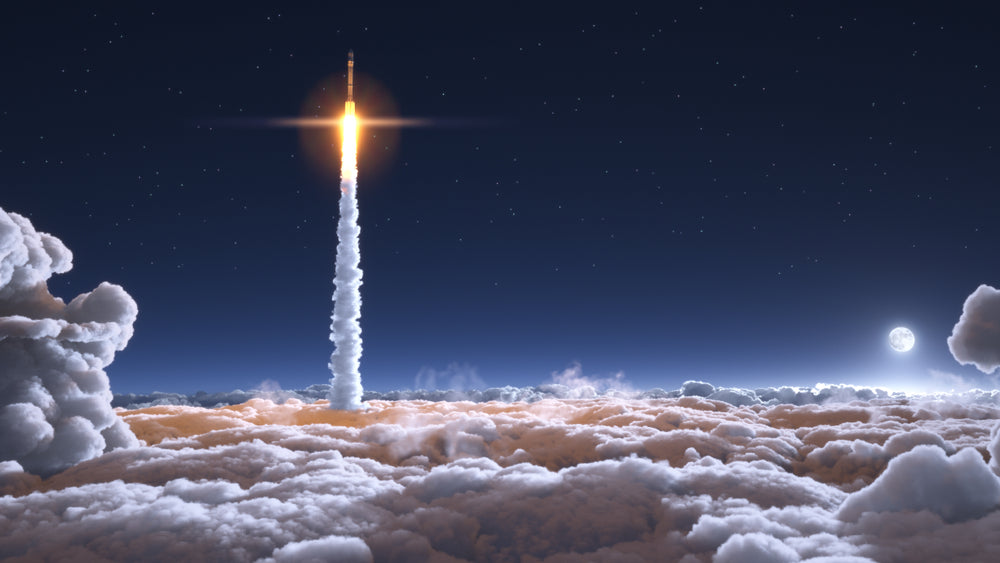
Nuclear-Powered Russian Spacecraft Intends To Visit Jupiter
Share
A Russian nuclear-powered spacecraft will head to the Moon, Venus, and Jupiter.
Russia's space agency said Saturday that its "space tug" - which transports astronauts or equipment - will launch on an interplanetary mission in 2030.
Zeus, the spacecraft's energy module, can propel heavy cargo through deep space. It's basically a nuclear power plant on wheels. In space. Without wheels.
There are several countries looking at similar technology as a way to shorten trips in space. Currently, spacecraft accelerate through solar power or gravity. The problem is that it'd take astronauts over three years to do a round-trip to Mars.
A nuclear-powered spacecraft could cut that timeline by a year.
As early as 2027, the US plans to put a nuclear power plant on the moon -- a 10-kilowatt reactor built into a lunar lander. Yet, NASA has only sent one nuclear reactor into space, on a satellite in 1965. Nuclear-powered spacecraft like the Mars Curiosity and Perseverance rovers don't have reactors.
Meanwhile, Russia put 30 reactors in space. According to Sputnik, the Zeus module would use a 500-kilowatt nuclear reactor to propel itself from planet to planet.
The spacecraft is going to orbit the Moon first, then head to Venus to use its gravity to steer toward Jupiter, its final destination. That would save propellant.
According to Alexander Bloshenko, Roscosmos' executive director for long-term programs and science, the project would last 50 months (just over four years). Bloshenko said Roscosmos and the Russian Academy of Sciences are still working on calculating the flight's ballistics, or trajectory, and how much weight it can carry.
Sputnik reported that Russia is designing a space station powered by the same nuclear technology used in the mission.
Why nuclear energy in space?

Solar power isn't as good as nuclear power in space
Solar power, batteries, and unstable atoms called radioisotopes are the main sources of energy for spacecraft.
For instance, NASA's Juno spacecraft uses solar panels to power itself. A spacecraft can also use solar power to charge its batteries, but the energy source becomes less plentiful as a spacecraft gets farther from the sun. Other times, lithium batteries can power short missions on their own. Huygens, for example, used batteries to briefly land on Titan, Saturn's moon, in 2005.
NASA's Voyager spacecraft use radioisotopes (nuclear batteries) to survive harsh environments like outer solar system and interstellar space, but that's not the same as bringing a nuclear reactor on board.
Atomic reactors have several advantages: They can survive the cold, dark regions of our Solar System without needing sunlight. Plus, they're reliable for a long time - the "Zeus" nuclear reactor lasts for 10 to 12 years. Besides, they can go to other planets faster.
There are also challenges with nuclear power. Some fuels, like highly enriched uranium, can withstand a reactor's extremely high temperatures - and some may not be safe to use. The U.S. banned highly enriched uranium for space missions if it was possible to use other nuclear fuel or non-nuclear power.
Russia has plans for a nuclear space station.

This is about the only good pic I could find to chuck in here - Clintern
Zeus was developed by Russian engineers in 2010 with the goal of sending it into orbit within two decades. Their goal is within reach.
Sputnik reported that engineers started testing a prototype in 2018. Last year, Roscosmos signed a deal with Arsenal, a design company based in St. Petersburg, for 4.2 billion rubles (US$57.5 million).
Russia might be able to build a new space station with this technology by 2025. According to the BBC, Russia is planning to cut ties with the International Space Station also in 2025.
The ISS was launched by Russia and the US in 1998. But the ISS's condition "leaves much to be desired," Yury Borisov said on Russian state TV last month. Indeed, the space station recently had air leaks and a breakdown of its oxygen system.
NASA says it will fly the International Space Station until 2028, but they probably will deorbit it in 10 or 15 years.
Are you part of our growing community?
Let us know in the comments to spread ARSE!
#Space_Aus




